Resources f.k.a. Links
Here are some resources that I found that may be helpful.
As with everything I link to, I'm just pointing it out, not promoting it as 100% accurate. caveat emptor and all that
Artist-in-Residence Resources
Want to be an artist somewhere other than in your own studio? Don't have a studio and want one? Well, consider becoming an Artist-in-Residence.
A good place to see what's available is:
CaFE - Call For Entry, aka callforentry.org
They have a calendar with deadlines, too Check it out and get planning!
A good place to see what's available is:
CaFE - Call For Entry, aka callforentry.org
They have a calendar with deadlines, too Check it out and get planning!
Alternative Photography Process Artists

Jessica Somers and me
Learn Alt Photo Processes
Creative Arts Workshop, New Haven. aka Where I teach.
80 Audubon Street
New Haven, Connecticut 06510
p) 203.562.4927 f) 203.562.2329
80 Audubon Street
New Haven, Connecticut 06510
p) 203.562.4927 f) 203.562.2329
Alt Photo Process Centers
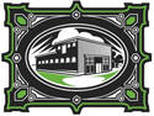
Photosynthesis - Photographic Arts and Services Center, Manchester CT
Supplies and materials for alt process photographers. Offers memberships to use their process darkrooms/labs, or day rates, also have workshops and hands-on instruction on a variety of alt processes. You can visit their website: http://photosynthesisct.com/
Or LIKE them on the Facebook for info on events, workshops, etc.: https://www.facebook.com/photosynthesisct?ref=pb
Pinhole Camera Calculator - Mr. Pinhole helps you figure out the size of aperture, focal length, etc. for pinhole cameras and camera obscura: http://www.mrpinhole.com/calcpinh.php
Historic Photography Processes : DIY How To Info
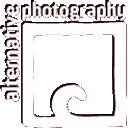
The best resource I've found online that's been consistently helpful for the past five years or so is:
alternativephotography.com
It may not be the slickest website ever designed, but if you can stomach the color choice, and the layout, check the tabs toward the top and, as of 4/2012, the second from the right is the "how-to" tab.
Presented in alpha order, from Anthotype to Ziatype (I'm guessing, hang on, I'll check... OK, it's actually from Albumen Prints to X-o-types), there are lots of processes to delve into. Some are more complicated, require more chemistry, tools, and know-how than others.
alternativephotography.com
It may not be the slickest website ever designed, but if you can stomach the color choice, and the layout, check the tabs toward the top and, as of 4/2012, the second from the right is the "how-to" tab.
Presented in alpha order, from Anthotype to Ziatype (I'm guessing, hang on, I'll check... OK, it's actually from Albumen Prints to X-o-types), there are lots of processes to delve into. Some are more complicated, require more chemistry, tools, and know-how than others.
Alternative Photography Supplies and Materials
- Retail Store and Hands-on Process Lab: Photosynthesis, Manchester CT
- Photo Process Chemistry (Bulk): Artcraft Chemicals
- Photo Process Chemistry Kits: Bostick & Sullivan
- Cyanotype treated fabrics: Blue Prints on Fabric
- Photo Process Chemistry Kits: Photographers Formulary
- Cyanotype Process Kits: Amazon sells Photographers Formulary's "New Cyanotype" by Mike Ware and
- Bostick & Sullivan variety of cyanotype kits
Definitions and History
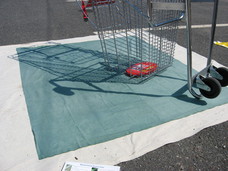
Cyanotype Process © 2008 Colin Burke
- Camera Obscura history from Robert Leggat's A History of Photography
- 3-D Animation of the CWOS Camera Obscura I built
Grant Application Writing Tips for Artists, Resources
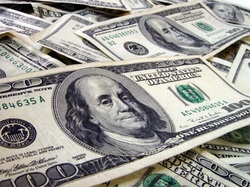
Google the words: researching grants for artists
and you may find some good information.
Here are some that I found and believe are helpful. As with everything I link to, I'm just pointing it out, not promoting it as 100% accurate.
MY #1 Tip:
Read FAQs and the grant/fellowship Eligibility Requirements first and carefully. Make sure you are eligible before investing any more time.
Many grant making entities only fund non-profit organizations, not individual artists/grant seekers. (See below, "Fractured Atlas" for more information on this.)
Some DO fund individual artists, but may have geographical, gender, or other restrictions. Read carefully. Hint: if you live in California, add "California" to your search terms.
and you may find some good information.
Here are some that I found and believe are helpful. As with everything I link to, I'm just pointing it out, not promoting it as 100% accurate.
MY #1 Tip:
Read FAQs and the grant/fellowship Eligibility Requirements first and carefully. Make sure you are eligible before investing any more time.
Many grant making entities only fund non-profit organizations, not individual artists/grant seekers. (See below, "Fractured Atlas" for more information on this.)
Some DO fund individual artists, but may have geographical, gender, or other restrictions. Read carefully. Hint: if you live in California, add "California" to your search terms.
- The Abundant Artist, www.abundant artist.com, has some good straightforward tips. [My tip: read around the outdated technology/image info]
- Fractured Atlas, www.fracturedatlas.org, one of the many resources available is "financial sponsorship." As a 501(c)3 non-profit. Fractured Atlas can be the applicant on behalf of your grant application if the grantor will only fund a non-profit organization. That's an over-simplification of what they do. Read all about it at their website.
- New York Foundation for the Arts Source www.nyfa.org/source/ "NYFA Source is the most extensive national directory of awards, services, and publications for artists. Listings include over 4,500 arts organizations, 3,600 award programs, 4,700 service programs, and 900 publications for individual artists across the country. More programs are added every day. "
Early Photographers
- Anna Atkins created 19th C. cyanotype book of botany specimens, considered the First Photography Book
- Photographer Nicephore Niepce - History of Photography The first photo, made in 1826, exposed over the course of an entire day.
- Hippolyte Bayard: One of the world's first photographers, Bayard's experiments predate those of Daguerre
- More about Bayard from A History of Photography by Robert Leggat
- William Henry Fox Talbot's Correspondence: About The Project
- William Henry Fox Talbot (1800–1877) and the Invention of Photography | Thematic Essay | Heilbrunn Timeline of Art History | The Metropolitan Museum of Art
- Sir John Herschel, first used term "photography" 1839
- Nikola Tesla, first used x-rays three years before "discovered" by Willhelm Rontgen. Tesla invented and discovered a lot of things and didn't get credit. "Imagine a world without wires!"
Early Optic/Pre-Photography Text
Other Contemporary Alternative Photographers/Artists
Abelardo Morrell - Camera Obscura
News -- Old and New
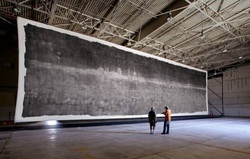
© 2007 The Legacy Project

